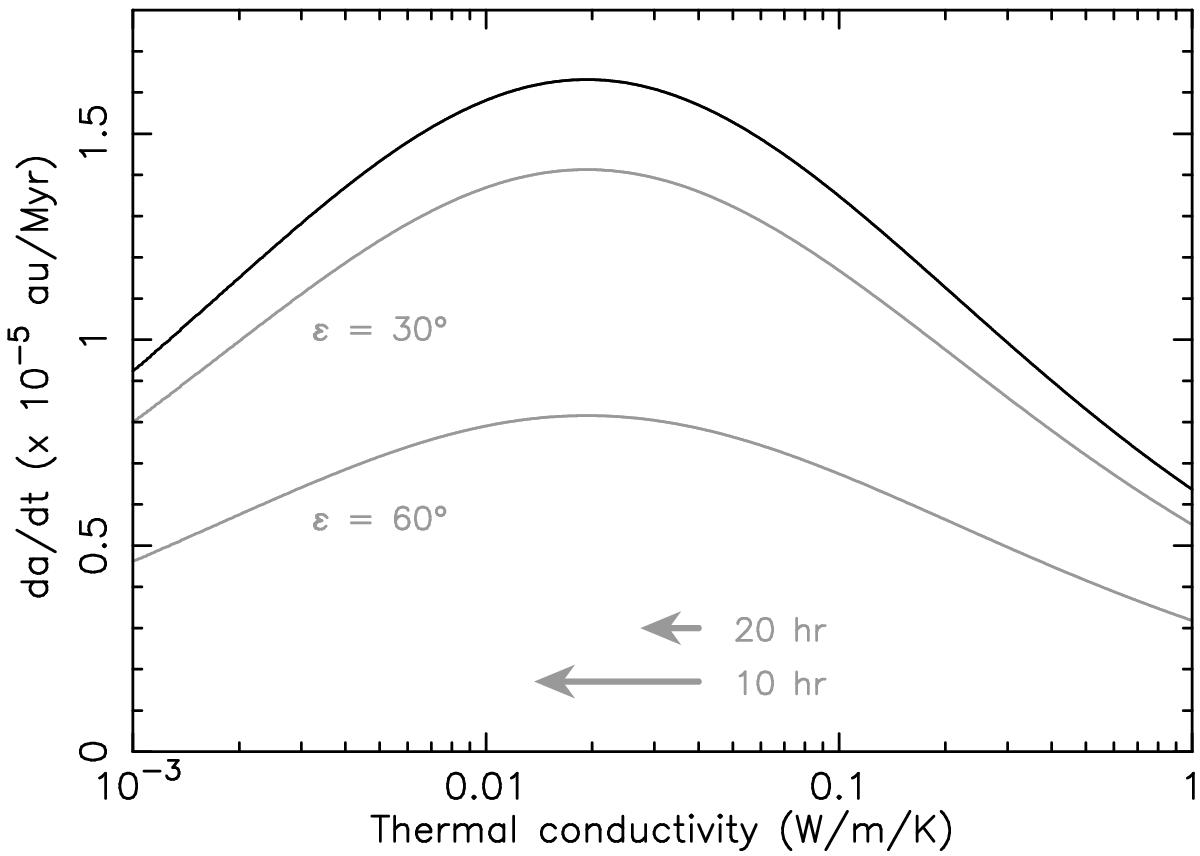Fig. 8

Estimated mean drift rate da/dt in semimajor axis due to the Yarkovsky effect for 495 Eulalia as a function of the surface thermal conductivity K. We assumed D = 40 km size, P = 29 h rotation period, 1.3 g/cm3 bulk density, 1.7 g/cm3 surface density and 800 J/kg/K. Since the diurnal variant of the Yarkovsky effect dominates, da/dt ∝ cosε, where ε is the obliquity of the spin axis. The upper black curve corresponds to a maximum drift-rate at ε = 0°, the gray curves are for ε = 30° and ε = 60°. Main-belt asteroids of Eulalia size and spectral type are expected to have K in between 0.001 and 0.01 W/m/K. Shorter rotation period would make the curves shifted according to the arrows (examples for 10 and 20 h).
Current usage metrics show cumulative count of Article Views (full-text article views including HTML views, PDF and ePub downloads, according to the available data) and Abstracts Views on Vision4Press platform.
Data correspond to usage on the plateform after 2015. The current usage metrics is available 48-96 hours after online publication and is updated daily on week days.
Initial download of the metrics may take a while.


